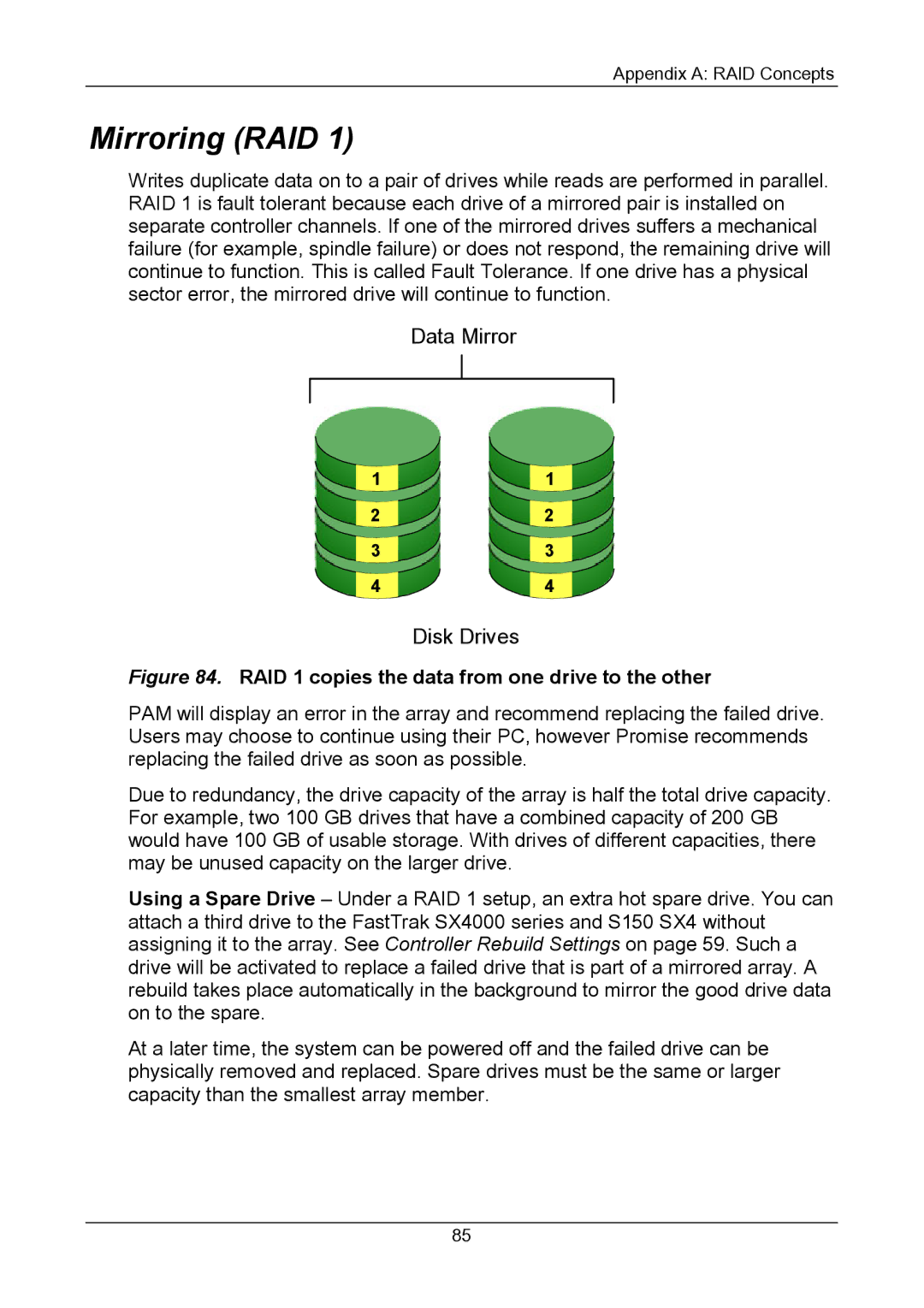
Appendix A: RAID Concepts
Mirroring (RAID 1)
Writes duplicate data on to a pair of drives while reads are performed in parallel. RAID 1 is fault tolerant because each drive of a mirrored pair is installed on separate controller channels. If one of the mirrored drives suffers a mechanical failure (for example, spindle failure) or does not respond, the remaining drive will continue to function. This is called Fault Tolerance. If one drive has a physical sector error, the mirrored drive will continue to function.
Data Mirror
11
22
33
44
Disk Drives
Figure 84. RAID 1 copies the data from one drive to the other
PAM will display an error in the array and recommend replacing the failed drive. Users may choose to continue using their PC, however Promise recommends replacing the failed drive as soon as possible.
Due to redundancy, the drive capacity of the array is half the total drive capacity. For example, two 100 GB drives that have a combined capacity of 200 GB would have 100 GB of usable storage. With drives of different capacities, there may be unused capacity on the larger drive.
Using a Spare Drive – Under a RAID 1 setup, an extra hot spare drive. You can attach a third drive to the FastTrak SX4000 series and S150 SX4 without assigning it to the array. See Controller Rebuild Settings on page 59. Such a drive will be activated to replace a failed drive that is part of a mirrored array. A rebuild takes place automatically in the background to mirror the good drive data on to the spare.
At a later time, the system can be powered off and the failed drive can be physically removed and replaced. Spare drives must be the same or larger capacity than the smallest array member.
85
